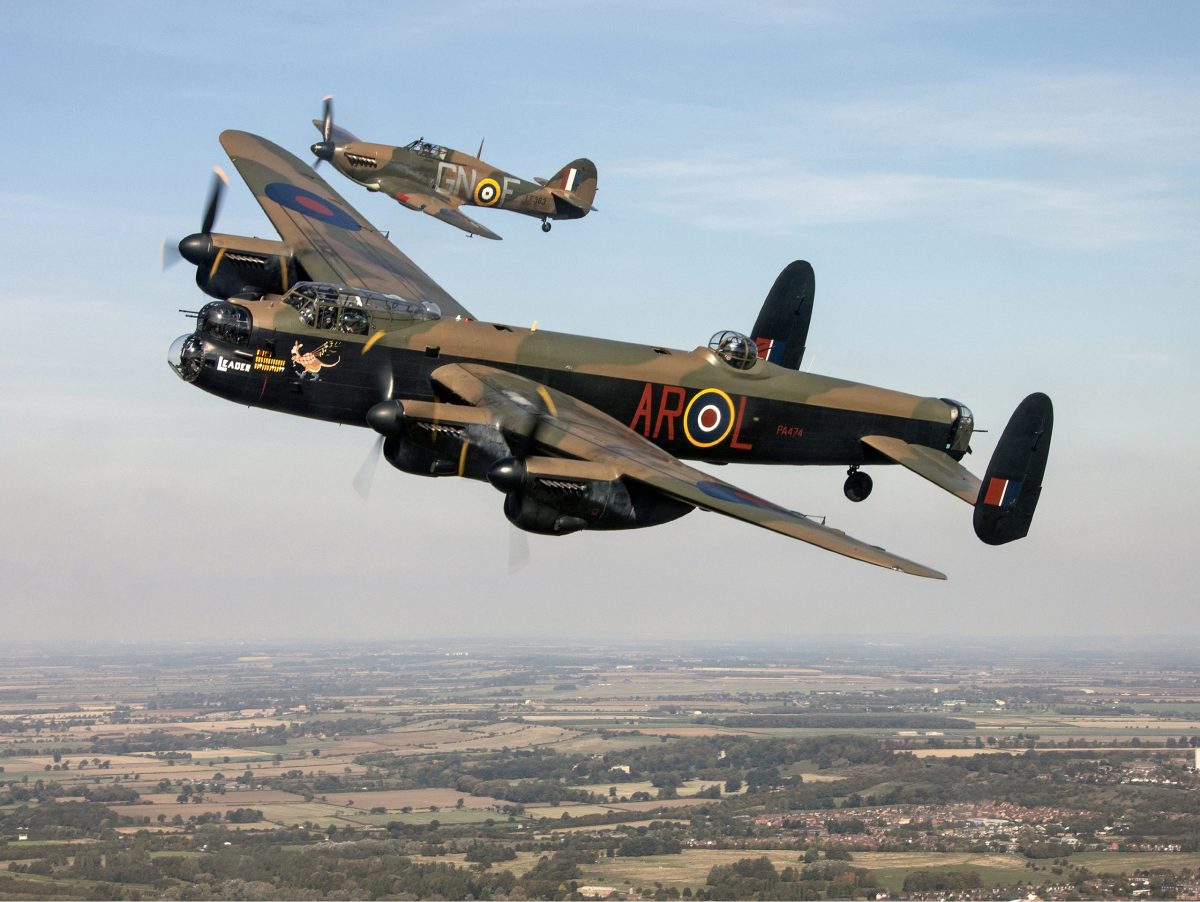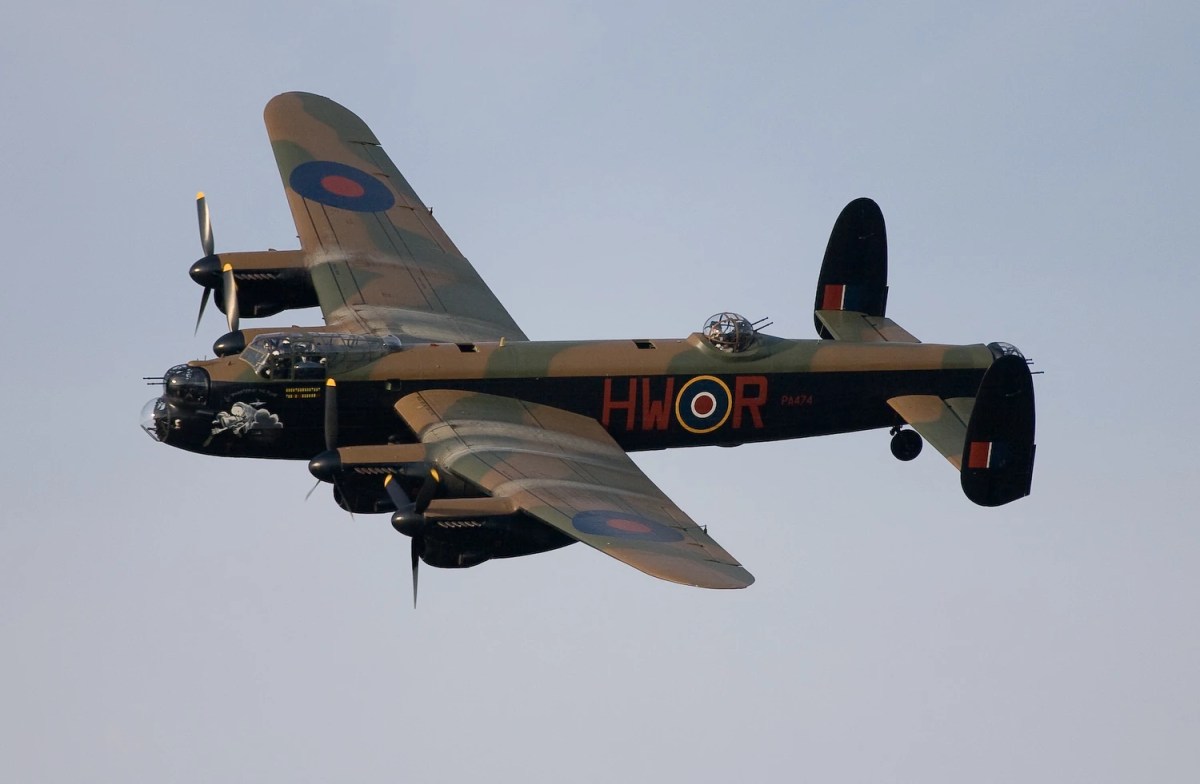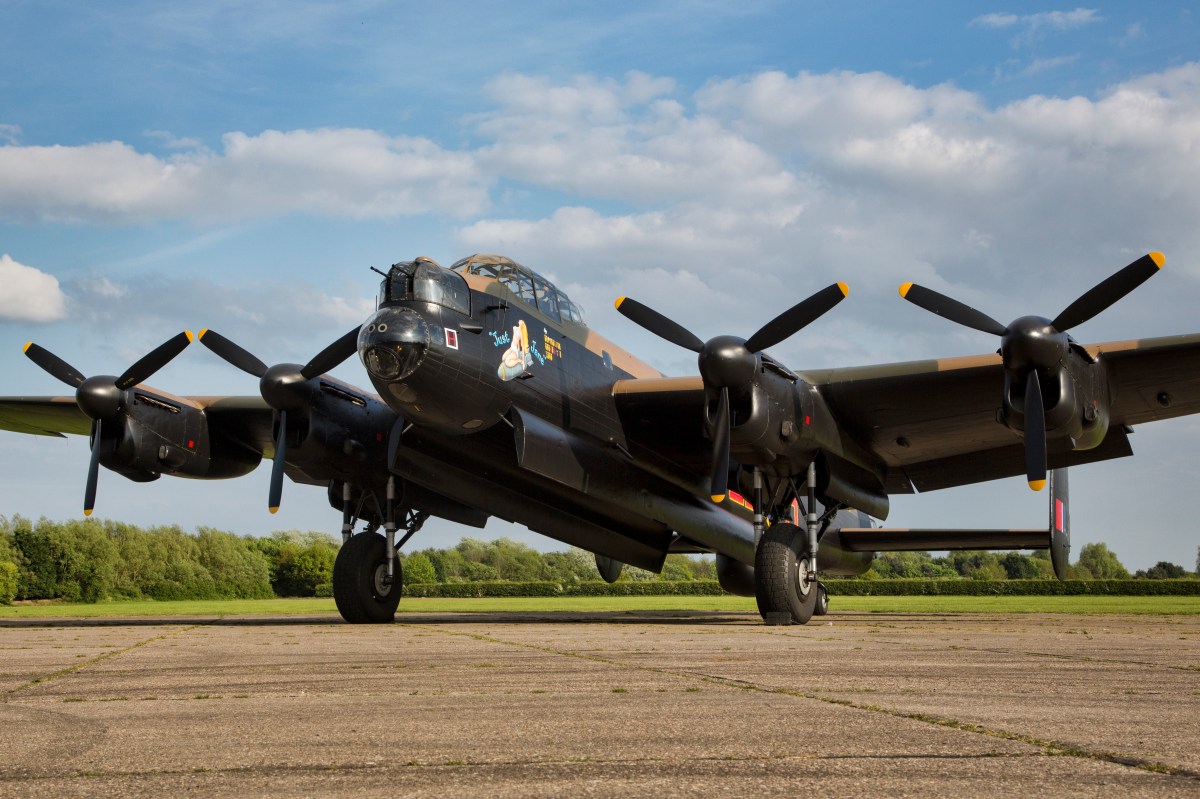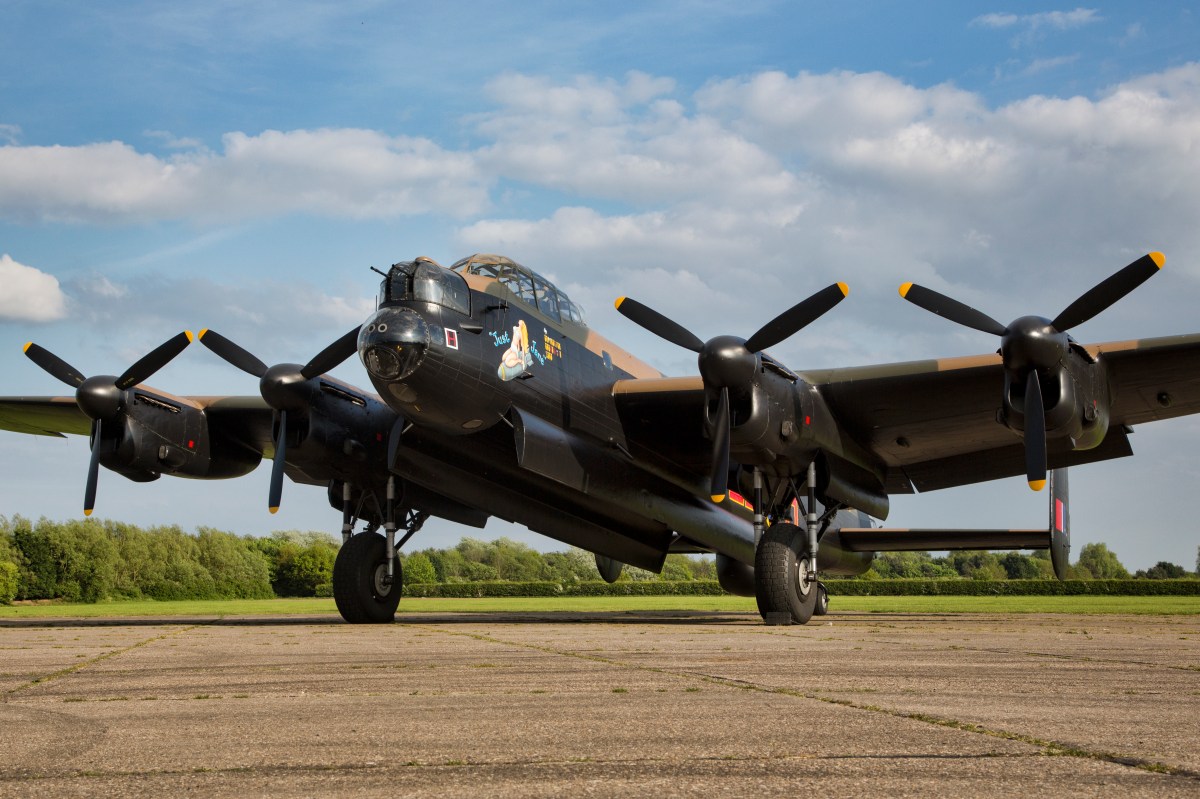Lancaster war plane, a name synonymous with the Second World War, represents a pivotal moment in aviation history. This iconic bomber, a marvel of engineering for its time, played a crucial role in the Allied victory, undertaking daring raids across enemy territory. Its design, operation, and enduring legacy continue to fascinate aviation enthusiasts and historians alike. We’ll explore its development, its impact on the war, and its lasting cultural significance.
From its initial design and construction to its deployment in some of history’s most daring bombing campaigns, the Lancaster bomber left an indelible mark. We’ll delve into the technological innovations that made it such a powerful weapon, the challenges faced by its crews, and the human stories behind its success. We’ll also look at its various variants and the modifications that improved its performance and effectiveness throughout the war.
Okay, so you’re thinking about the Lancaster bomber, right? That awesome WWII plane. Now, imagine trying to simulate its flight dynamics in a game – you’d need some serious graphical power. That’s where the nvidia geforce rtx 5070 comes in; its processing muscle would make rendering that historic aircraft and its environment incredibly realistic. Back to the Lancaster, though – what a magnificent machine!
Avro Lancaster: A British Icon of World War II: Lancaster War Plane
The Avro Lancaster, a four-engine heavy bomber, stands as a testament to British engineering and the unwavering spirit of its aircrews during World War II. Its imposing size, impressive payload capacity, and remarkable resilience in the face of intense enemy fire cemented its place in history as one of the most iconic and effective bombers of the conflict.
Lancaster Bomber History
The Lancaster’s development began in the late 1930s, responding to the Air Ministry’s need for a larger bomber capable of carrying heavier payloads over longer distances. The design incorporated advanced aerodynamic principles and robust construction techniques for its time. Initial test flights occurred in 1941, followed by operational deployment later that year. Throughout the war, the Lancaster participated in numerous high-profile bombing raids across occupied Europe, playing a crucial role in the Allied war effort.
Key specifications included a wingspan of 102 feet, a maximum speed of around 280 mph, and a bomb load capacity exceeding 22,000 pounds.
The Lancaster’s operational history is marked by a series of significant bombing raids, including the devastating raids on Hamburg, Cologne, and Berlin. The aircraft’s ability to withstand flak and fighter attacks, coupled with its substantial payload, proved instrumental in weakening the German war machine. Production of the Lancaster continued until 1946, with a total of over 7,300 aircraft built.
The Lancaster was eventually retired from RAF service in the early 1960s, marking the end of an era in military aviation.
A timeline illustrating the Lancaster’s life cycle:
- 1935: Design commences.
- 1941: First flight and operational deployment.
- 1942-1945: Intensive use in major bombing campaigns across Europe.
- 1946: End of production.
- 1960s: Retirement from RAF service.
Lancaster Bomber Variants and Modifications

Several variants of the Lancaster were produced throughout its service life, each with specific modifications to enhance performance or address operational needs. These modifications included changes to engines, defensive armament, and bomb-carrying capacity. These improvements significantly impacted the aircraft’s operational effectiveness and survivability.
Okay, so you’re into Lancaster bombers, those magnificent warplanes? Think about their firefighting capabilities – now imagine a modern equivalent. Check out the amazing amphibious firefighting aircraft, the cl-415 , a real workhorse. It’s a far cry from the Lancaster, but both share a dedication to a vital role, protecting lives and property. The Lancaster’s legacy of service continues in the spirit of these modern aircraft.
| Designation | Key Differences | Operational History | Notable Features |
|---|---|---|---|
| Lancaster I | Initial production model. | Extensive use in early bombing campaigns. | Established the basic design. |
| Lancaster III | Improved engines and defensive armament. | Mainstay of later bombing operations. | Enhanced performance and survivability. |
| Lancaster B.I | Dedicated to meteorological reconnaissance. | Supported bombing operations with weather data. | Specialized equipment for weather observation. |
Lancaster Bomber Crew and Operations, Lancaster war plane

A Lancaster crew typically consisted of seven men, each with specific roles and responsibilities. Rigorous training was essential to ensure the crew’s proficiency in handling the complex aircraft and executing missions effectively. Crews faced numerous challenges, including enemy fire, adverse weather conditions, and mechanical failures. The daily routine of a Lancaster crew member on a bombing mission involved pre-flight checks, navigation, bombing, and defense against enemy fighters.
- Pre-flight checks and briefing.
- Take-off and navigation to the target.
- Bombing run and release.
- Evasive maneuvers and defense against enemy fighters.
- Navigation back to base.
- Landing and post-mission debriefing.
Lancaster Bomber Legacy and Impact
The Lancaster’s legacy extends beyond its military contributions. Its innovative engineering solutions, such as its all-metal construction and advanced aerodynamic design, significantly influenced the development of post-war aircraft. Its cultural impact is equally significant, with the Lancaster frequently featured in books, films, and museums, symbolizing courage, resilience, and the sacrifices made during World War II.
A visual representation of the Lancaster’s impact might depict a silhouette of the bomber against a backdrop of a night sky, overlaid with images representing technological advancements (e.g., a schematic of its engines, a representation of its bomb-bay mechanisms) and cultural influence (e.g., a movie still, a museum display). The overall composition would symbolize the aircraft’s pivotal role in military history and its lasting cultural imprint.
The Lancaster bomber, a symbol of WWII air power, relied on basic navigation and communication tech. Imagine how its capabilities would have been boosted by modern advancements! Check out the latest developments in news technology to see how far we’ve come since then. Think about the precision bombing possible with today’s systems compared to the Lancaster’s era.
It’s a huge leap forward.
The color palette would be somber, reflecting the wartime context, but with accents of hope and resilience, emphasizing the crew’s bravery and the Allied victory.
Okay, so you’re looking at the Lancaster bomber, a heavy hitter from WWII. It’s a far cry from modern airliners, right? Think about the sheer difference in technology; now compare that to a sleek jetblue plane , a completely different beast designed for passenger comfort and speed. The Lancaster, though, remains an iconic symbol of a different era in aviation history – a testament to engineering ingenuity.
| Technological Advancements | Cultural Significance | Stories of Bravery |
|---|---|---|
| All-metal construction, advanced aerodynamics, powerful engines. | Iconic symbol of WWII, featured in numerous films and documentaries. | Numerous accounts of Lancaster crews overcoming incredible odds to complete missions. |
Lancaster Bomber Technology and Engineering

The Lancaster’s design incorporated several innovative engineering solutions. Its all-metal monocoque construction provided strength and rigidity, while its advanced aerodynamic design contributed to its performance. The aircraft’s four Rolls-Royce Merlin engines provided the power needed to carry heavy bomb loads over long distances. The bomb bay’s design allowed for efficient payload delivery, and its navigation systems were sophisticated for their time.
Compared to contemporary designs, the Lancaster’s engineering represented a significant step forward in heavy bomber technology.
Summary
The Lancaster war plane stands as a testament to human ingenuity and courage. Its contributions to the Allied war effort were undeniable, shaping the course of World War II and leaving an enduring legacy in military aviation. Beyond its military significance, the Lancaster’s impact extends to popular culture, ensuring its place in history remains firmly cemented. The stories of bravery and sacrifice associated with the Lancaster and its crews will forever be remembered.
FAQ
How many crew members were on a Lancaster?
A Lancaster bomber typically had a crew of seven.
What was the Lancaster’s top speed?
Its top speed varied depending on the variant and load, but generally around 280 mph (450 km/h).
What type of bombs did the Lancaster carry?
The Lancaster carried a variety of bombs, including high-explosive, incendiary, and specialized bombs.
How many Lancasters were built?
Over 7,000 Lancasters were built during World War II.
